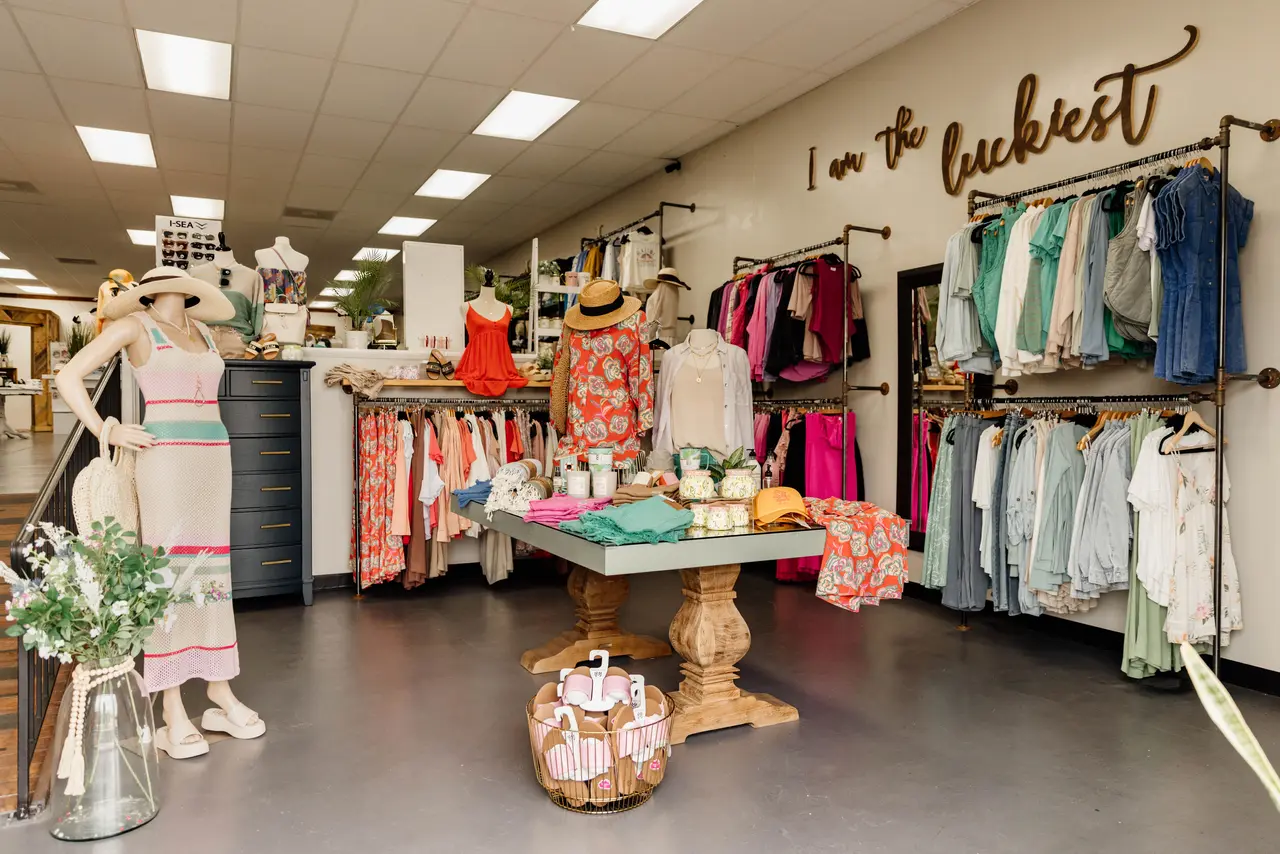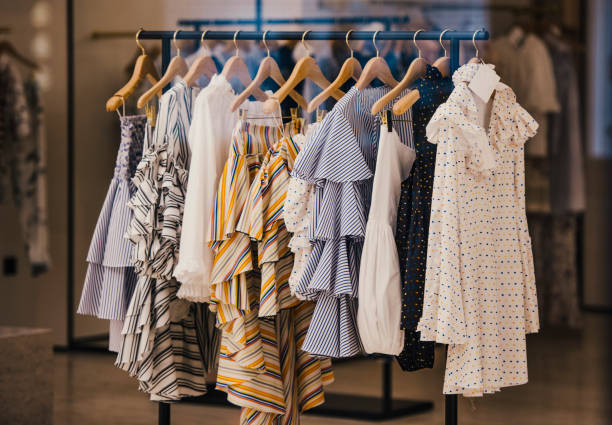Why Boutique Fashion is the Ultimate Selection for Special Style
Why Boutique Fashion is the Ultimate Selection for Special Style
Blog Article
Discovering the Advancement and Effect of Garments on Modern Fashion Trends
The advancement of clothing has dramatically affected modern-day fashion trends, combining historical precedents with advanced advancements. Famous numbers like Coco Chanel and Yves Saint Laurent changed the apparel industry by introducing ideas that focus on convenience and access, which proceed to resonate today. Technical strides in locations such as 3D printing and smart fabrics are redefining style possibilities and customer experiences (boutique fashion). In addition, the expanding emphasis on inclusivity and sustainability is improving market criteria. As we take into consideration these diverse impacts, one have to wonder about exactly how these aspects collectively redefine style's duty in reflecting and forming contemporary culture.
Historical Fashion Influencers
In the tapestry of style background, certain figures have left an enduring mark, shaping the fads and styles that define whole eras. Coco Chanel, an innovative designer, redefined women's fashion by introducing comfy, classy clothing that departed from restrictive corsets.
Elsa Schiaparelli is another essential number, renowned for her progressive designs that included surrealist art, teaming up with Salvador Dalí to produce whimsical pieces that tested conventional aesthetic appeals. Her innovative usage of color and strong patterns reverberates in contemporary style. Yves Saint Laurent, meanwhile, equalized haute couture with prêt-à-porter collections, bringing runway styles to the masses and setting a criterion for contemporary ready-to-wear lines.
These enthusiasts, to name a few, not just changed fashion in their times but likewise established enduring patterns that reverberate in today's fashion industry, giving a foundation upon which modern developers continue to develop and introduce. Their traditions highlight the importance of creative thinking and daring in vogue's ever-evolving narrative.
Technical Developments in vogue
In the middle of the vibrant landscape of the fashion business, technological developments stand at the leading edge of advancement, reshaping just how developers produce and customers engage with fashion. The combination of 3D printing has revolutionized design processes, making it possible for designers to experiment with intricate frameworks and lasting products that were previously inconceivable. This technology helps with fast prototyping, lowering waste and accelerating manufacturing times.

Smart textiles, embedding innovation right into materials, are likewise transforming the sector. Developments like temperature-regulating and self-cleaning textiles provide enhanced functionality and convenience. Wearable innovation, integrating attributes like physical fitness monitoring and interaction, includes a new dimension to style, merging aesthetics with usefulness.
Cultural Changes and Design
As technological developments remain to improve the garment industry, social shifts are equally prominent, redefining design and consumer preferences. Over the last few years, the rise of social networks platforms has increased the circulation of international style fads, permitting varied social impacts to converge and coexist. This digital interconnectivity has actually helped with the rapid exchange of ideas, resulting in an extra comprehensive and diverse analysis of style that mirrors the multifaceted nature of contemporary culture.
Social awareness and recognition have prompted developers to draw motivation from a more comprehensive range of historic and ethnic contexts, incorporating typical themes with contemporary looks. This combination has led to style that reverberates with a bigger audience, promoting a sense of identity and belonging throughout various demographics. Furthermore, the increasing need for customization has driven brand names to supply adjustable options, making it possible for customers to express individuality while showing their cultural heritage.
Moreover, moving societal worths have influenced fashion, with inclusivity and variety ending up being main motifs. The sector has begun to accept versions and influencers of different type of body, ethnic cultures, and gender identifications, difficult traditional elegance requirements. This improvement emphasizes the power of social changes in forming the future of fashion, as design ends up being an extra genuine expression of cumulative and personal identification.
Sustainability and Modern Layout
While the apparel industry continues to progress, the imperative for sustainability has become increasingly urgent, affecting modern-day design methods. This shift aims to resolve ethical considerations and ecological issues, causing a reevaluation of typical production approaches. Developers are currently incorporating sustainable products, such as natural cotton, recycled polyester, and eco-friendly textiles, right into their collections, lowering the eco-friendly footprint of fashion. The increase of sluggish style, which emphasizes quality over amount, motivates consumers to buy ageless pieces instead of transient patterns.
Furthermore, contemporary layout is identified by its technology in reducing waste and advertising circularity. This approach not only alleviates ecological effect however likewise improves the social duty of fashion homes.

Future Trends in Fashion

Sustainability will certainly proceed to be a driving go to the website pressure in shaping future fashion fads. The industry is increasingly adopting green products and ethical production he said techniques, reacting to an expanding customer need for responsible practices. Developments such as bio-fabricated products and closed-loop recycling systems are readied to redefine how apparel is produced and taken in, reducing environmental influence while maintaining design and quality.
Cultural changes, including the rise of inclusivity and variety, will certainly likewise play a pivotal duty. As society ends up being a lot more familiar with social concerns, style is anticipated to become a system for expression and adjustment. Designers will likely concentrate on producing collections that reflect a broader series of identities and experiences, championing depiction and ease of access.
Conclusion
The development of garments substantially affects modern-day fashion fads, where historic influences combine with modern styles. Trick figures like Coco Chanel and Yves Saint Laurent have redefined style, while technological advancements such as 3D printing and smart fabrics expand creative possibilities. Cultural shifts in the direction of inclusivity and sustainability compel brands to take on honest methods and embrace variety. This ongoing advancement underscores style's duty as a mirror to societal values and technological advancement, suggesting a future go to my site rich with development and inclusivity.
The development of clothing has dramatically affected modern fashion fads, merging historical criteria with innovative technologies.Amidst the dynamic landscape of the fashion market, technological improvements stand at the center of technology, reshaping just how designers develop and consumers involve with style.While the style industry continues to evolve, the important for sustainability has actually become progressively immediate, affecting modern-day style practices. As sustainability becomes embedded in contemporary layout, it paves the way for an extra mindful and liable style industry.
The development of apparel considerably impacts modern fashion fads, where historical influences merge with contemporary designs.
Report this page